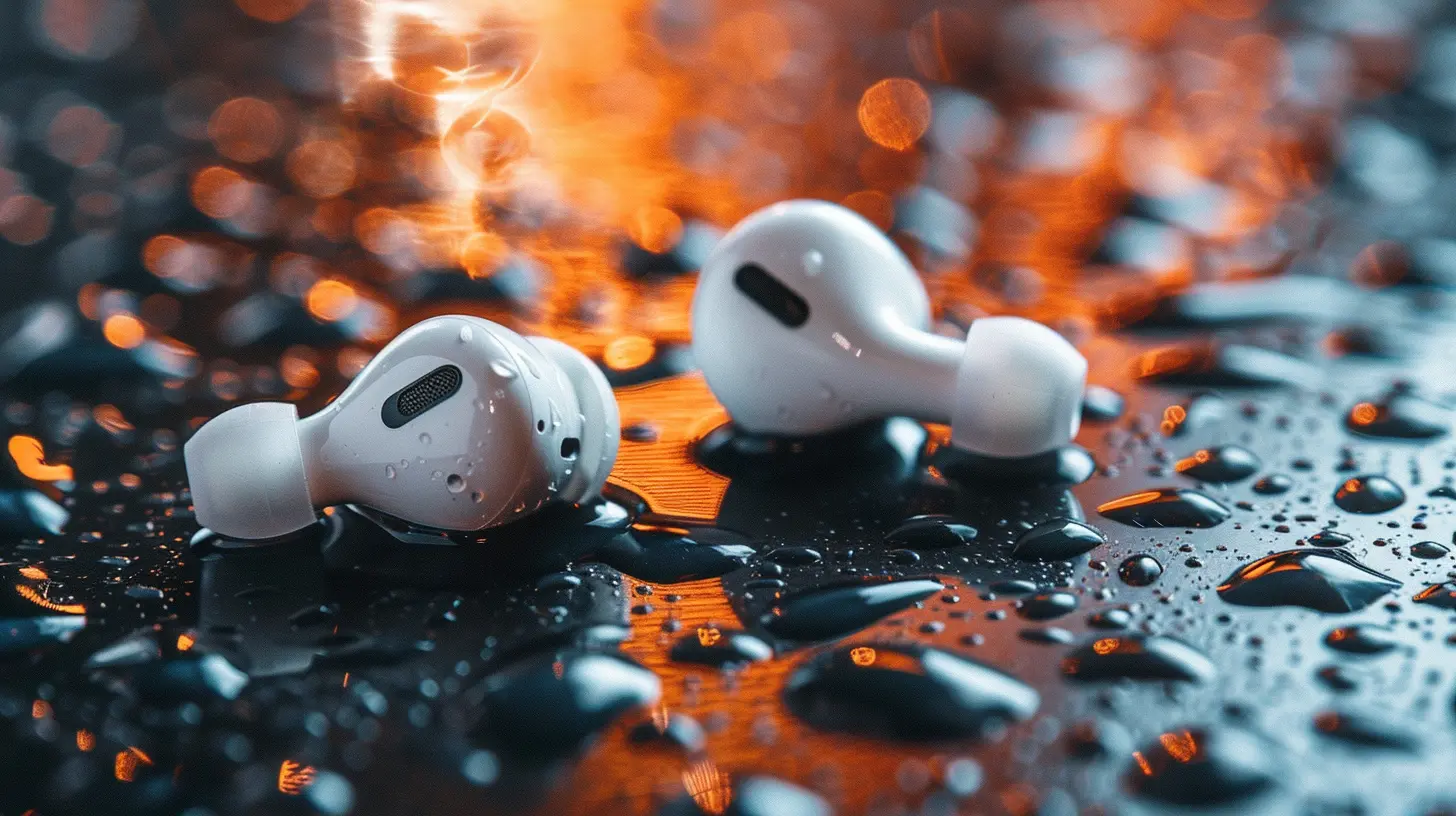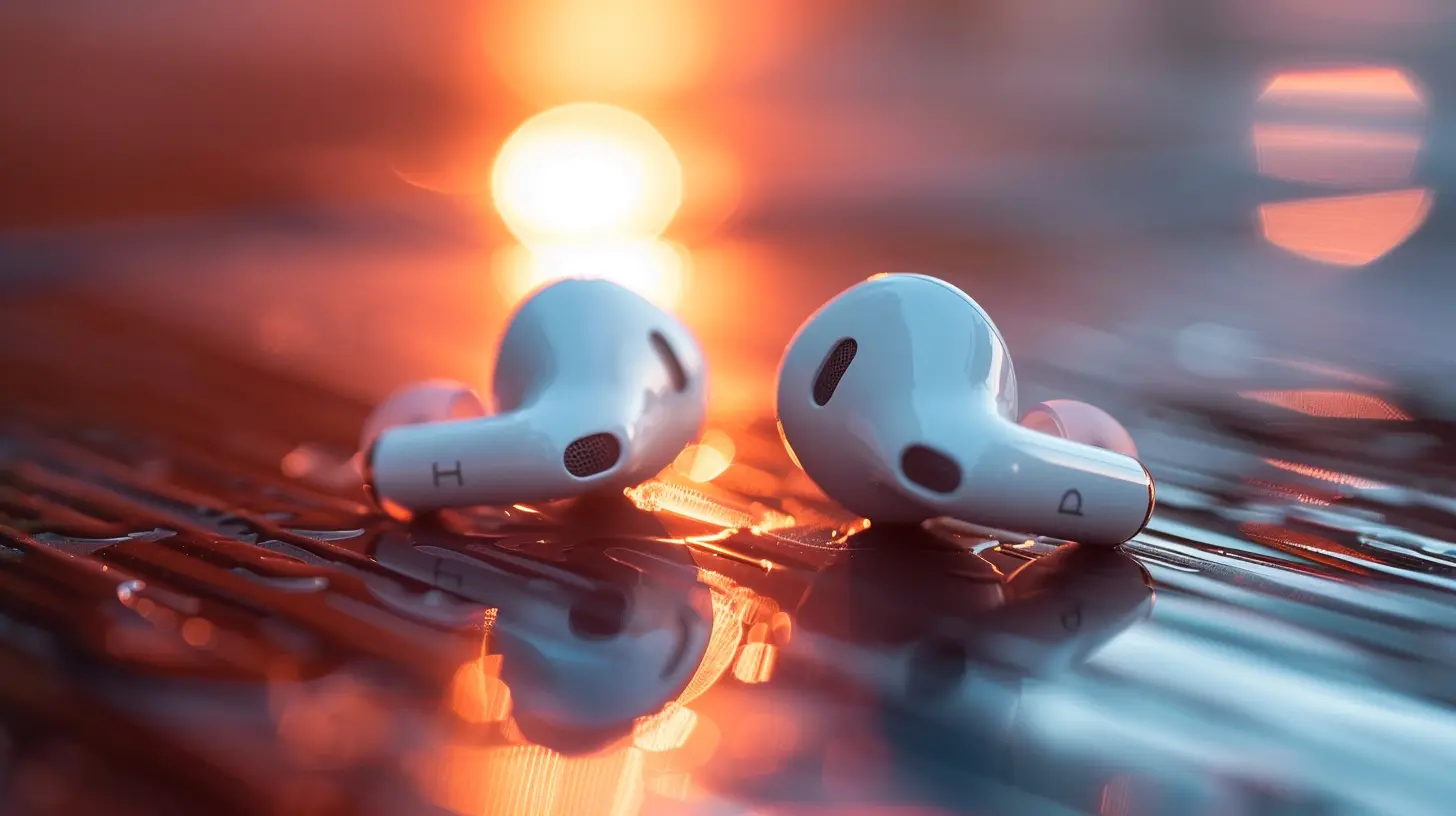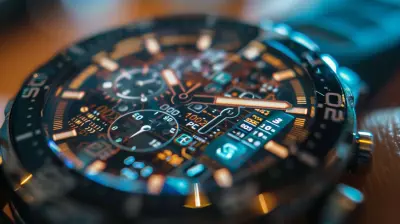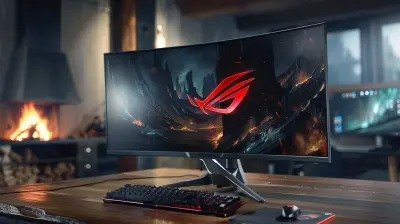How Important Is Driver Size in Wireless Earbuds? Decoding Audio Quality Claims
20 February 2025
Wireless earbuds have quickly become an essential part of our daily lives. Whether you're working out, commuting, or just relaxing at home, they offer a convenient way to listen to music, podcasts, or even take calls without being tethered to your device. But with so many options on the market, it's easy to be overwhelmed by technical jargon. One of the most common terms you'll come across is "driver size."
You might be wondering, Does the size of the drivers really matter when it comes to audio quality? Well, you're not alone! In this article, we're going to break down what driver size is, how it affects your listening experience, and whether it's something you should prioritize when shopping for a new pair of wireless earbuds. Let's decode those audio quality claims together, shall we?

What Are Drivers in Wireless Earbuds?
Before we get into the nitty-gritty of driver size, let's first clarify what a driver actually is. In simple terms, the driver is the component inside your earbuds that converts electrical signals into sound waves. It's essentially the tiny speaker that pumps out all the glorious sounds you're listening to.Think of the driver as the engine of a car. Without it, nothing moves. Similarly, without a driver, your earbuds wouldn't be able to produce sound. There are three main parts to a driver:
1. Diaphragm: The diaphragm vibrates to create soundwaves.
2. Voice Coil: The voice coil creates an electromagnetic field that moves the diaphragm.
3. Magnet: The magnet helps the voice coil move, controlling the vibrations of the diaphragm.
How these components interact dictates the sound quality you experience, but the size of the driver also plays a role. Now, let’s dive deeper into the importance of driver size.

Does Bigger Always Mean Better?
You’ve probably seen some manufacturers boast about larger drivers in their earbuds, implying that bigger drivers automatically equal better sound quality. But is that really the case?In theory, larger drivers are capable of producing more powerful sound, especially in the bass frequencies. This is because the bigger diaphragm has more surface area to push air, which is necessary for producing those deep, resonant bass notes. But (and this is a big "but"), it’s not always that straightforward.
The Bass Factor
If you're a bass junkie who loves feeling the thump of every beat, you might be tempted to jump straight for earbuds with larger drivers. Yes, bigger drivers can deliver more impactful bass, but bigger doesn't always mean better overall sound. While large drivers excel at low-frequency bass, they may struggle with clarity at higher frequencies, like treble and mid-range sounds.So, if you're only concerned with bass, a larger driver might suit your needs. But if you prefer a more balanced sound, where vocals and instruments are crisp and clear, then you might want to consider other factors as well. Bigger drivers often sacrifice clarity in the highs and mids, which can make your music sound muddy or overpowering in the bass department.
Size Constraints in Wireless Earbuds
Let’s be real here: Wireless earbuds are small. Unlike over-ear headphones, which have the luxury of space to accommodate large drivers, wireless earbuds are compact by design. Most wireless earbuds are equipped with drivers that range from 6mm to 10mm. You simply can't fit a 40mm driver (like those found in some over-ear headphones) into the tiny shell of a wireless earbud.So, when it comes to wireless earbuds, manufacturers often rely on smaller drivers. But don't let that fool you into thinking they can't produce high-quality sound. In fact, technological advancements have made it possible for even small drivers to deliver impressive audio.

Other Factors That Impact Sound Quality
While driver size does play a role in the sound quality of wireless earbuds, it's not the only factor. Here are some other things you should consider when evaluating the audio quality of your next pair of earbuds:1. Driver Type
There are several types of drivers used in wireless earbuds, and each has its own strengths and weaknesses. Here’s a quick rundown:- Dynamic Drivers: These are the most common type of drivers found in wireless earbuds. They are relatively inexpensive and can produce powerful bass. However, they may lack the high-frequency detail that audiophiles crave.
- Balanced Armature Drivers: These drivers are smaller than dynamic drivers and are often used in conjunction with them to improve high-frequency clarity. They excel at delivering crisp treble but may struggle with bass.
- Hybrid Drivers: Some wireless earbuds use a combination of dynamic and balanced armature drivers to provide a more balanced sound profile. This allows for deep bass while maintaining clarity in the mids and highs.
2. Tuning
Driver size is important, but the way the sound is tuned can make a world of difference. Tuning refers to how manufacturers adjust the frequencies that the driver produces. Some earbuds are tuned to emphasize bass, while others prioritize mids or highs. A well-tuned smaller driver can easily outperform a poorly-tuned larger driver.3. Earbud Fit and Seal
Believe it or not, how well your earbuds fit can drastically affect the sound quality. Why? Because a good seal in your ear canal helps the earbuds properly deliver sound, especially in the low-end frequencies. If your earbuds don’t fit well, you’ll lose bass, and everything will sound a little tinny.4. Bluetooth Codec Support
When you're using wireless earbuds, sound quality is also affected by the Bluetooth codec that your device and earbuds are using. Codecs like aptX, AAC, and LDAC offer higher-quality audio transmission, which can make a noticeable difference in sound clarity, especially in the treble and midrange frequencies. If you're an iPhone user, AAC is your best bet, while Android users may benefit more from aptX or LDAC support.5. Noise Isolation and Cancellation
Noise-canceling technology can also play a big role in sound quality. By reducing background noise, Active Noise Cancellation (ANC) allows you to hear more detail in your music without cranking up the volume. Meanwhile, good passive noise isolation (achieved through a snug fit) can enhance bass response and overall clarity.
Is Driver Size a Dealbreaker?
So, after all this discussion, you might still be asking, Should I care about driver size when choosing wireless earbuds? The answer is... it depends.If you primarily listen to bass-heavy music like hip-hop or EDM, you might appreciate the extra low-end punch that a larger driver can provide. However, if you're more of a podcast listener or enjoy a wide range of music genres, you might be happier with earbuds that focus on balanced sound rather than sheer bass power.
Driver size is certainly something to keep in mind, but it’s far from the only factor that determines sound quality. Other elements like driver type, tuning, fit, and even the Bluetooth codec play equally important roles in shaping your listening experience.
The Takeaway
At the end of the day, driver size is just one piece of the puzzle when it comes to choosing wireless earbuds. While larger drivers can deliver more powerful bass, they don’t automatically equate to better overall sound quality. It's essential to consider other factors, like driver type, tuning, fit, and Bluetooth codec support, to ensure you’re getting the best audio experience possible.Think of it like shopping for a car. Sure, a bigger engine might give you more horsepower, but if the car’s suspension, tires, and brakes aren’t up to par, you're not going to have a smooth ride. Similarly, a good pair of wireless earbuds is about more than just driver size—it’s about how all the components work together to deliver the best sound for your ears.
So next time you’re in the market for a new pair of wireless earbuds, don’t get too hung up on driver size. Instead, look at the entire package to find the earbuds that suit your needs. After all, your ears deserve the best!
all images in this post were generated using AI tools
Category:
Wireless EarbudsAuthor:

Adeline Taylor
Discussion
rate this article
17 comments
Vincent Martinez
Driver size is like a pizza slice—bigger can be better, but flavor (aka audio) is key!
March 15, 2025 at 4:18 AM

Adeline Taylor
That's a great analogy! While driver size can impact audio delivery, the overall sound quality ultimately hinges on design, tuning, and technology.
Niko Cummings
In the realm of sound where whispers play, Driver size holds sway, yet it's more than mere display. In wireless realms, balance and grace intertwine, Quality in harmony—let your ears define. Dive deep, let music's essence shine.
March 14, 2025 at 8:22 PM

Adeline Taylor
Thank you for capturing the essence of audio quality! Driver size is indeed crucial, but it's the synergy of design and technology that truly elevates the listening experience.
Zevin McLaurin
Interesting take! I’ve always wondered how driver size truly impacts audio quality. Excited to learn more about the science behind it!
March 13, 2025 at 8:26 PM

Adeline Taylor
Thank you! Driver size plays a role in sound reproduction, but factors like design and materials are equally crucial. Stay tuned for deeper insights in the article!
Kira McTigue
Driver size in wireless earbuds does affect audio quality, but it’s not the sole determinant. While larger drivers can produce deeper bass and greater volume, factors like design, materials, and software also play crucial roles. Therefore, consumers should consider the overall quality rather than size alone.
March 13, 2025 at 4:48 AM

Adeline Taylor
You're absolutely right! Driver size impacts audio quality, but it's just one of many factors, including design, materials, and software. A holistic approach to assessing earbuds ensures the best listening experience.
Roxie Tucker
Driver size matters, but don't be fooled—real audio quality stems from engineering, tuning, and personal listening preferences.
March 12, 2025 at 5:30 AM

Adeline Taylor
Absolutely! While driver size plays a role, engineering and personal preferences are key to true audio quality.
Xander Meyers
This article effectively highlights the impact of driver size on audio quality in wireless earbuds, providing insightful analysis that helps consumers make informed purchasing decisions.
March 10, 2025 at 8:41 PM

Adeline Taylor
Thank you for your feedback! I'm glad you found the article insightful in addressing the role of driver size in audio quality. Your support is appreciated!
Caroline Phillips
Great article! Understanding driver size is essential for evaluating wireless earbuds. While larger drivers can enhance bass and overall sound, other factors like design and software also play crucial roles in audio quality.
March 8, 2025 at 3:27 AM

Adeline Taylor
Thank you for your insightful comment! You're absolutely right—driver size is just one piece of the puzzle in determining audio quality. Design and software are equally important for a well-rounded listening experience.
Vanta Soto
Great article! It’s fascinating to see how driver size influences audio quality in wireless earbuds. Your insights provide valuable clarity for consumers navigating the myriad of options available today. Thank you!
March 7, 2025 at 9:27 PM

Adeline Taylor
Thank you for your kind words! I'm glad you found the insights helpful in understanding driver size and audio quality in wireless earbuds.
Cara McKinney
Great article! You’ve shed light on a crucial aspect of wireless earbuds that often gets overlooked. Understanding driver size can significantly impact audio quality, and it’s empowering for consumers to make informed choices. Thanks for breaking it down!
March 2, 2025 at 6:03 AM

Adeline Taylor
Thank you for your kind words! I'm glad you found the article helpful in understanding the importance of driver size in wireless earbuds.
Buzz McMurtry
Driver size in earbuds: like shoe size for sound! Bigger isn’t always better, but who doesn’t love a good bass boost?
February 28, 2025 at 12:27 PM

Adeline Taylor
Absolutely! Just like shoe sizes, driver sizes have their unique advantages. While larger drivers can enhance bass, sound quality ultimately depends on design and tuning.
Faye Rhodes
Great article! It’s essential to understand driver size, but remember that factors like design, materials, and tuning also play a significant role in overall audio quality in wireless earbuds.
February 27, 2025 at 11:58 AM

Adeline Taylor
Thank you for your insightful comment! You're absolutely right—driver size is just one of many factors that contribute to audio quality in wireless earbuds.
Cassian McKenzie
Great insights! It's fascinating how driver size impacts audio quality. I always thought bigger meant better, but it’s all about the tech behind it. Thanks for clarifying!
February 26, 2025 at 5:28 AM

Adeline Taylor
Thank you! I'm glad you found it insightful. Driver size is just one piece of the puzzle—technology and design play crucial roles too!
Primrose Blevins
Driver size in wireless earbuds is like the size of a pizza slice—bigger might seem better, but it’s really about the toppings! Whether you crave bass or treble, just remember: you can’t eat the slice if the crust is too thin. Choose wisely, earbud connoisseurs!" 🍕🎧
February 25, 2025 at 4:13 AM

Adeline Taylor
Great analogy! It's true that driver size alone doesn't dictate sound quality—it's about the overall tuning and balance of the earbuds. Quality toppings matter most! 🍕🎧
Graham Gilbert
Great insights! It's crucial to understand how driver size affects audio quality, especially for those seeking the best listening experience. Appreciate your thoughtful breakdown!
February 24, 2025 at 9:07 PM

Adeline Taylor
Thank you! I'm glad you found the insights valuable. Driver size definitely plays a key role in audio performance.
Viviana Reyes
Driver size in wireless earbuds is like choosing between a tiny hamster and a fierce lion for your audio experience—one’s cute but the other roars with clarity!
February 22, 2025 at 6:00 AM

Adeline Taylor
Great analogy! Driver size does play a crucial role in audio quality, with larger drivers typically delivering richer sound, while smaller ones may excel in portability.
Rosalind Baker
“Driver size in wireless earbuds is like pizza toppings—bigger isn’t always better! A tiny driver can deliver a symphony while a big one might just deliver a cheesy ‘meh.’ Choose wisely, my audiophile friends!”
February 21, 2025 at 8:12 PM

Adeline Taylor
Absolutely! Driver size isn’t the sole indicator of audio quality; it’s all about the design and tuning. Quality matters more than quantity!
Simone Frye
Great insights on driver size's impact on audio quality! It's fascinating how many factors influence sound performance in wireless earbuds. Looking forward to more discussions on optimizing listening experiences. Thank you!
February 21, 2025 at 5:35 AM

Adeline Taylor
Thank you! I appreciate your enthusiasm and look forward to diving deeper into the various factors influencing audio quality in future discussions.
MORE POSTS

How Quantum Computing Will Revolutionize Scientific Research

Quantum Cryptography: The Future of Cybersecurity

How AI is Improving the Speed and Efficiency of Wearable Tech

How Drones Are Shaping the Future of Journalism

How to Select the Perfect Gaming Headset for Competitive Play

How Machine Learning is Used in Fraud Detection and Prevention

How Quantum Computing Will Shape the Future of Cloud Computing

Version Control Mastery: Git Techniques for Efficient Collaboration

The Role of Quantum Computing in Accelerating Artificial Neural Networks

Top Budget Monitors for Gamers: Affordable Yet Powerful

Building Cross-Platform Apps with Flutter: A Comprehensive Guide